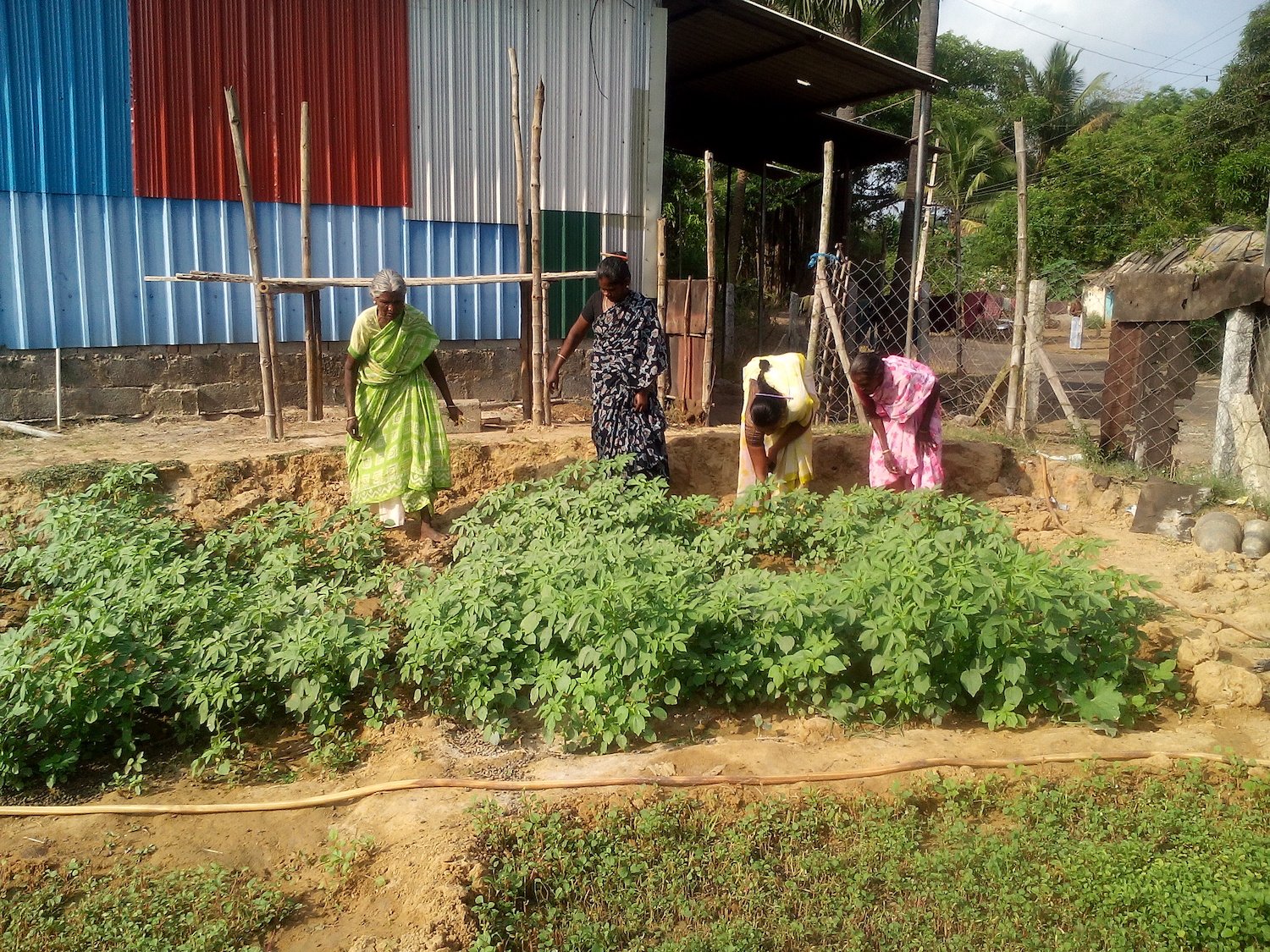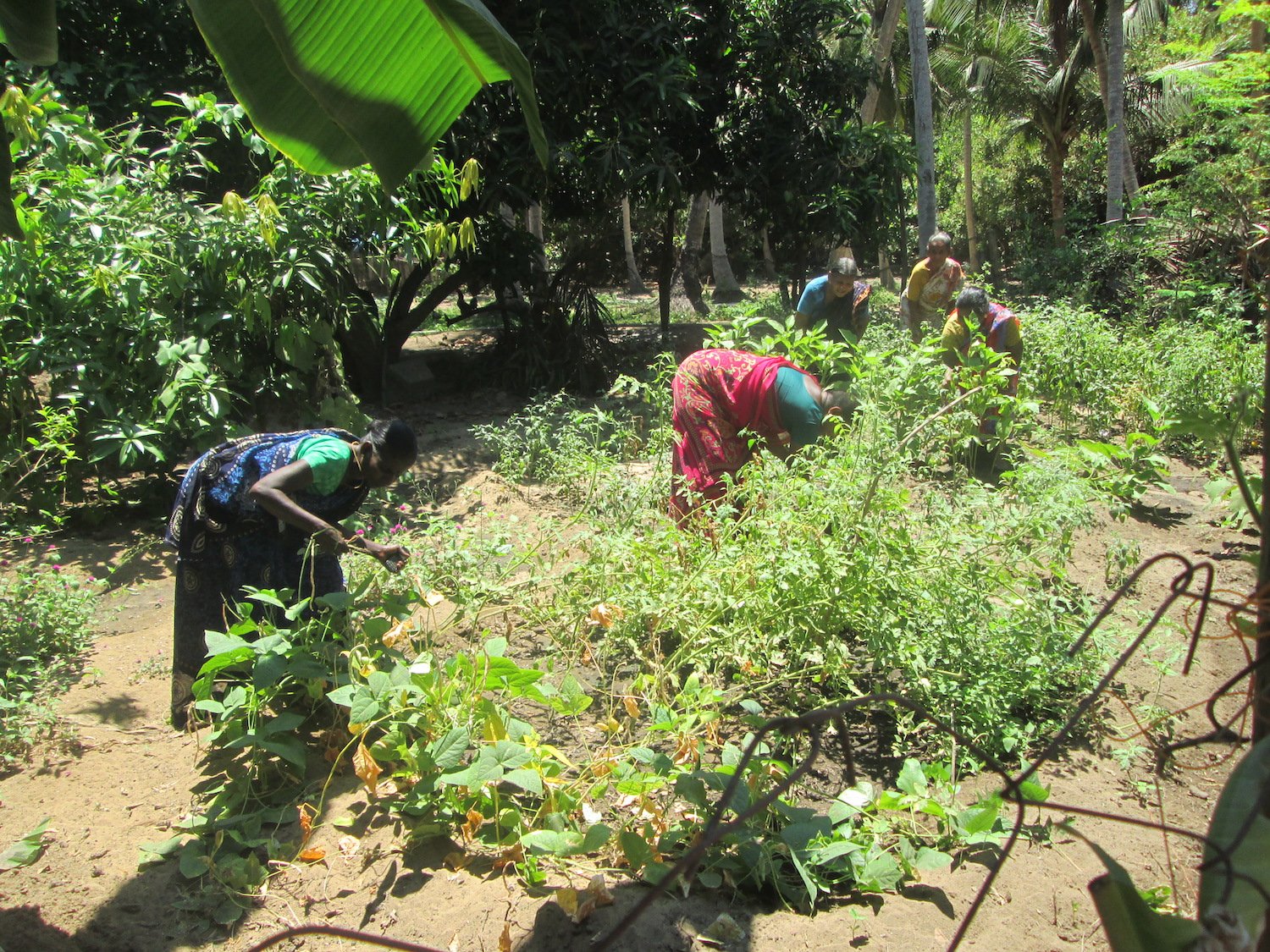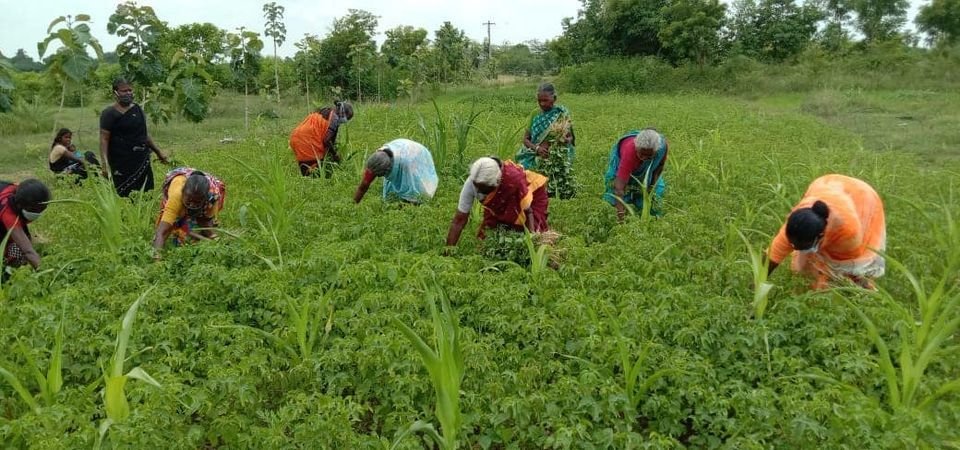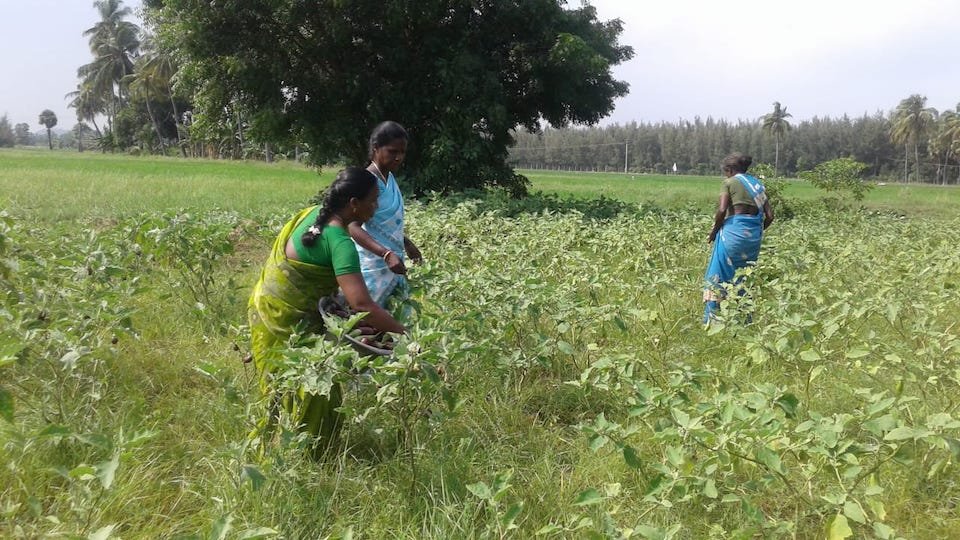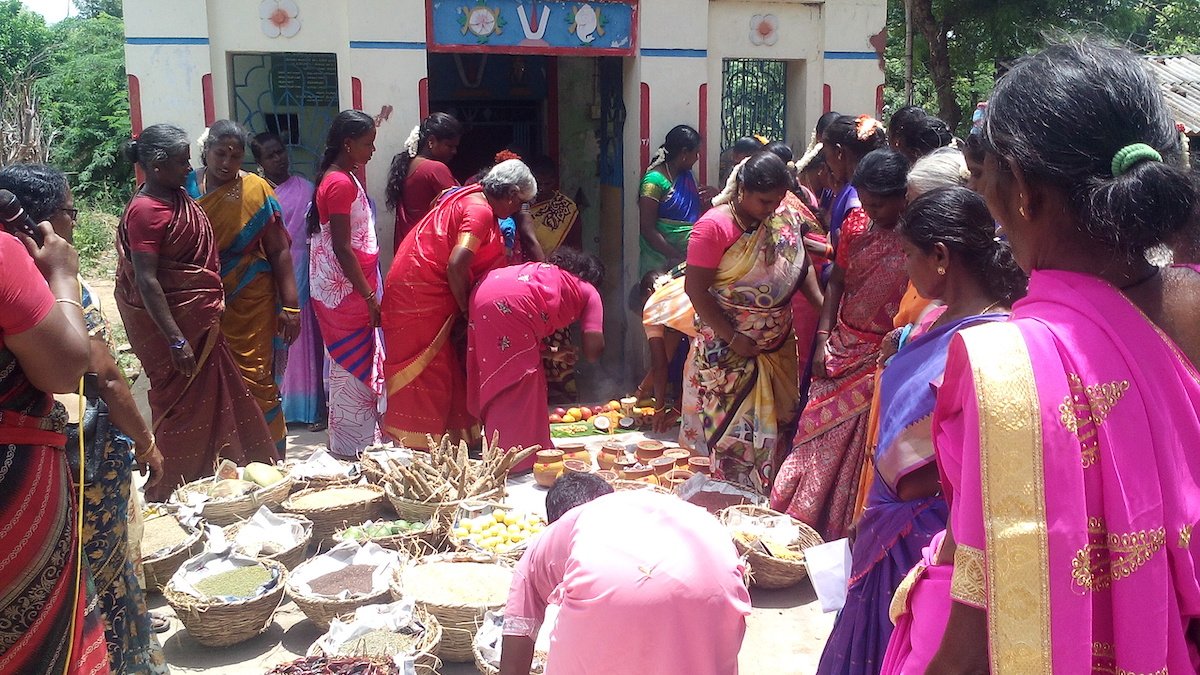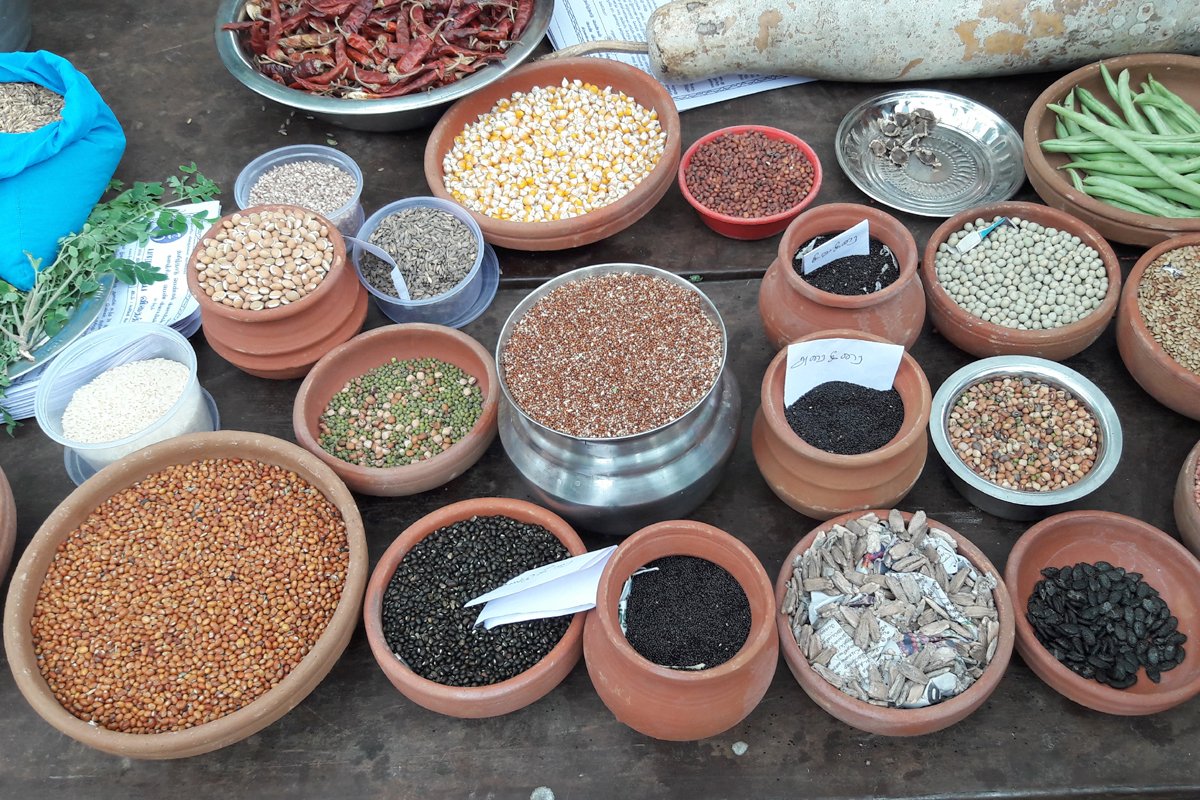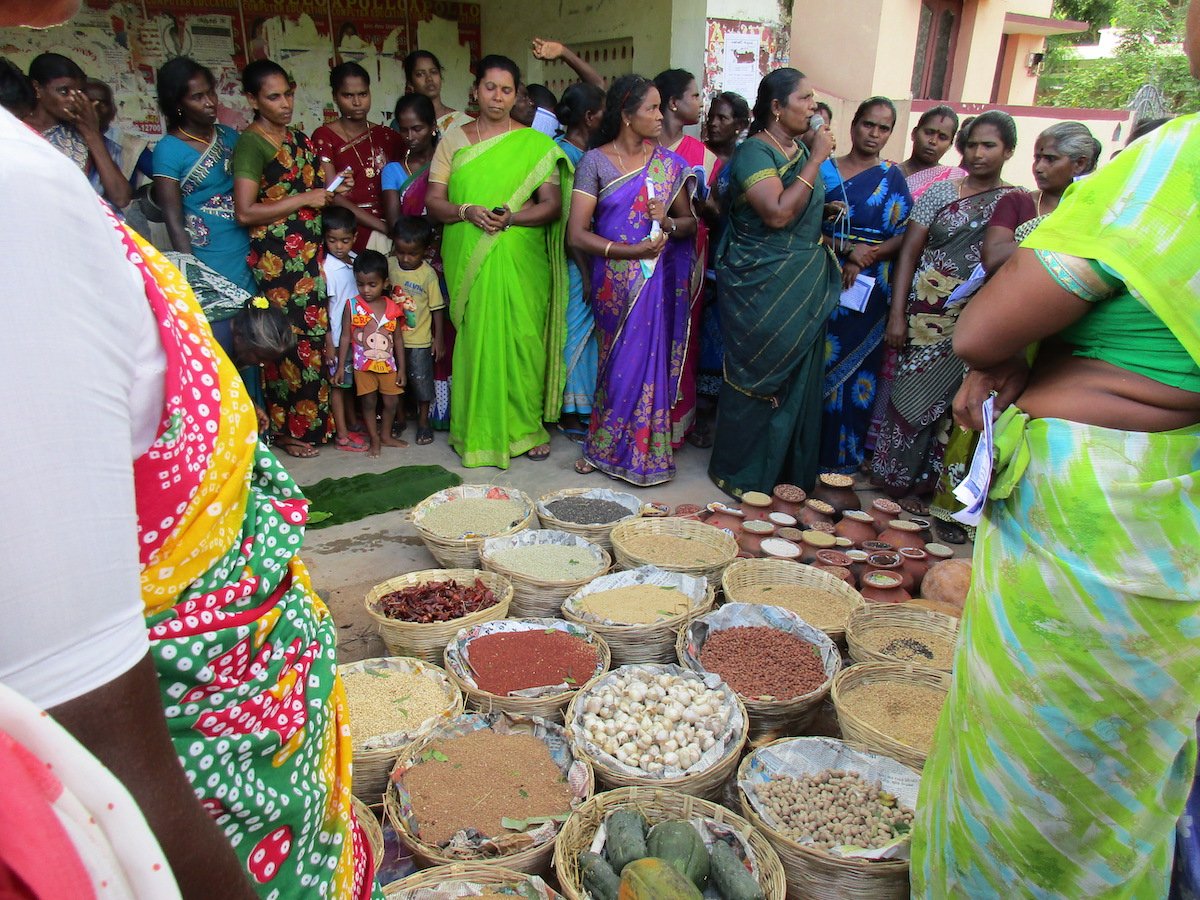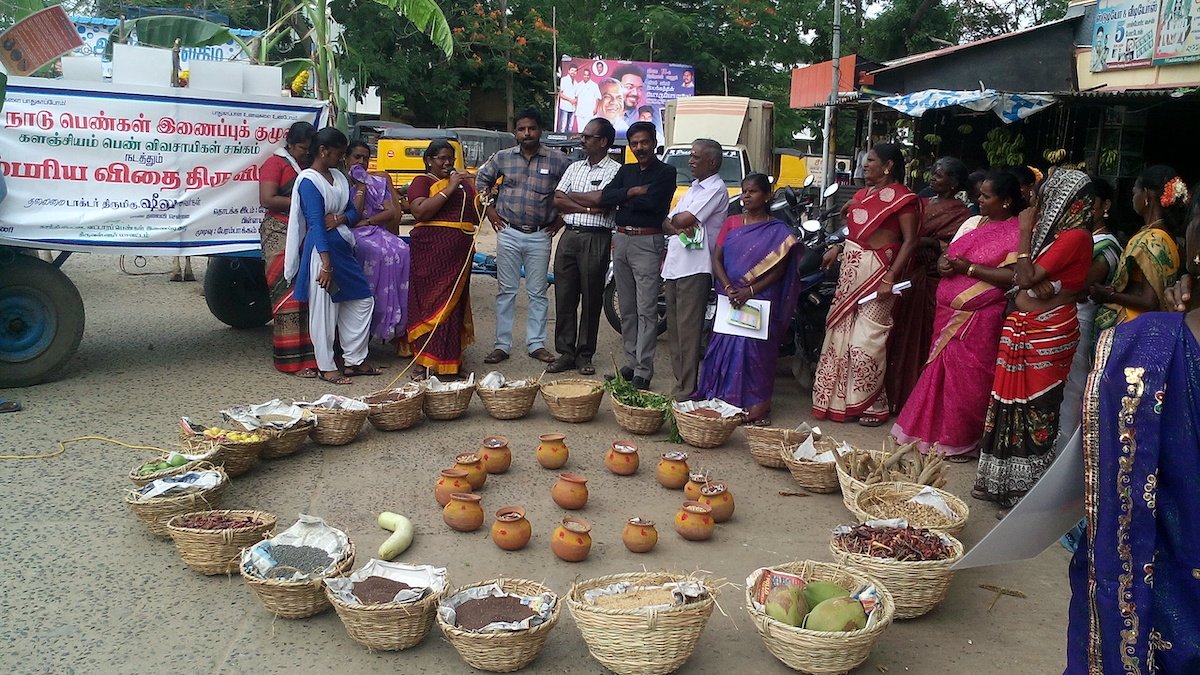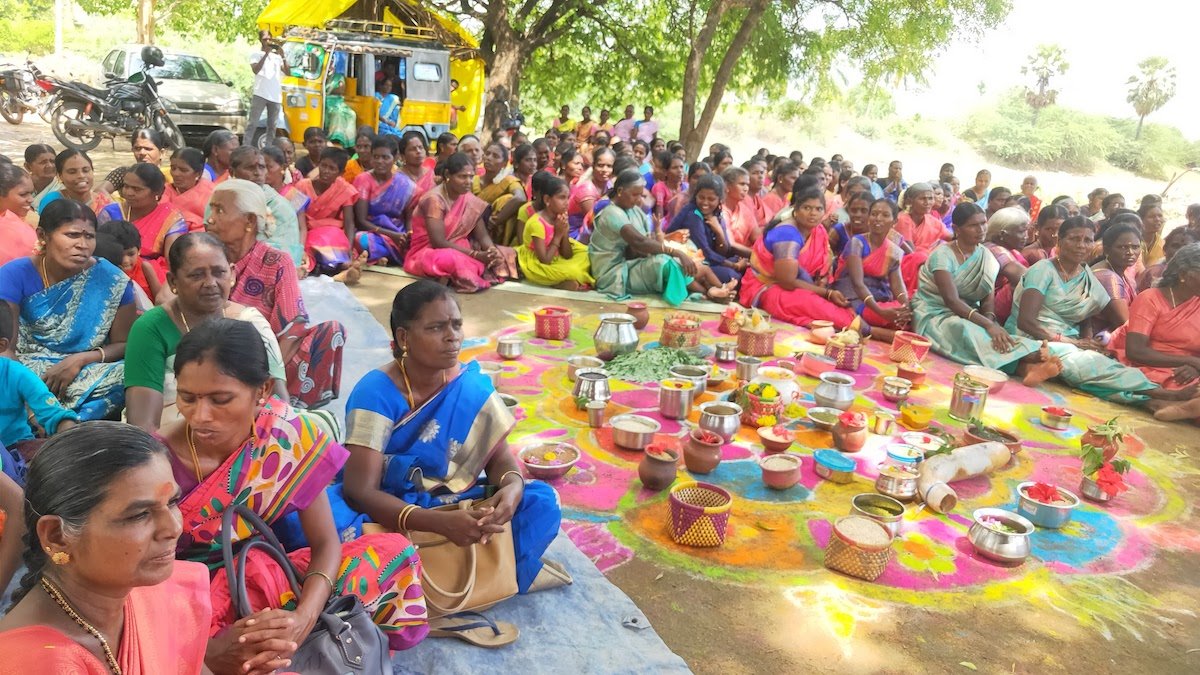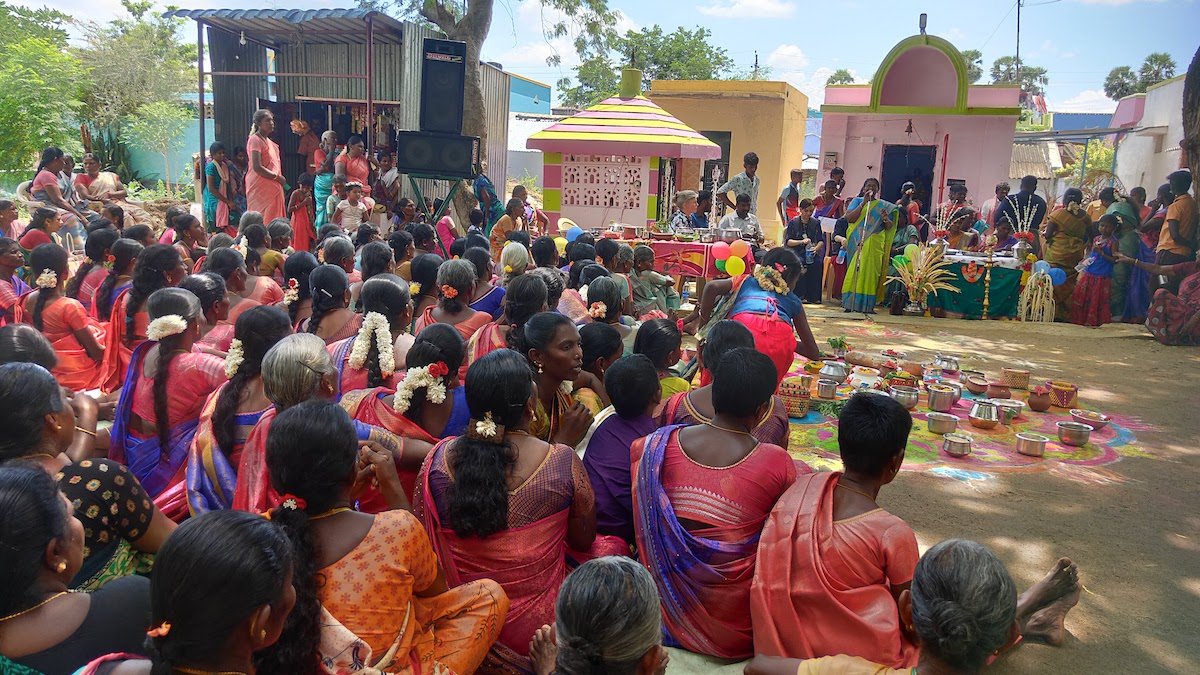In Tamil Nadu, Women Sustain the Revival of a Grain Orphaned by the Green Revolution
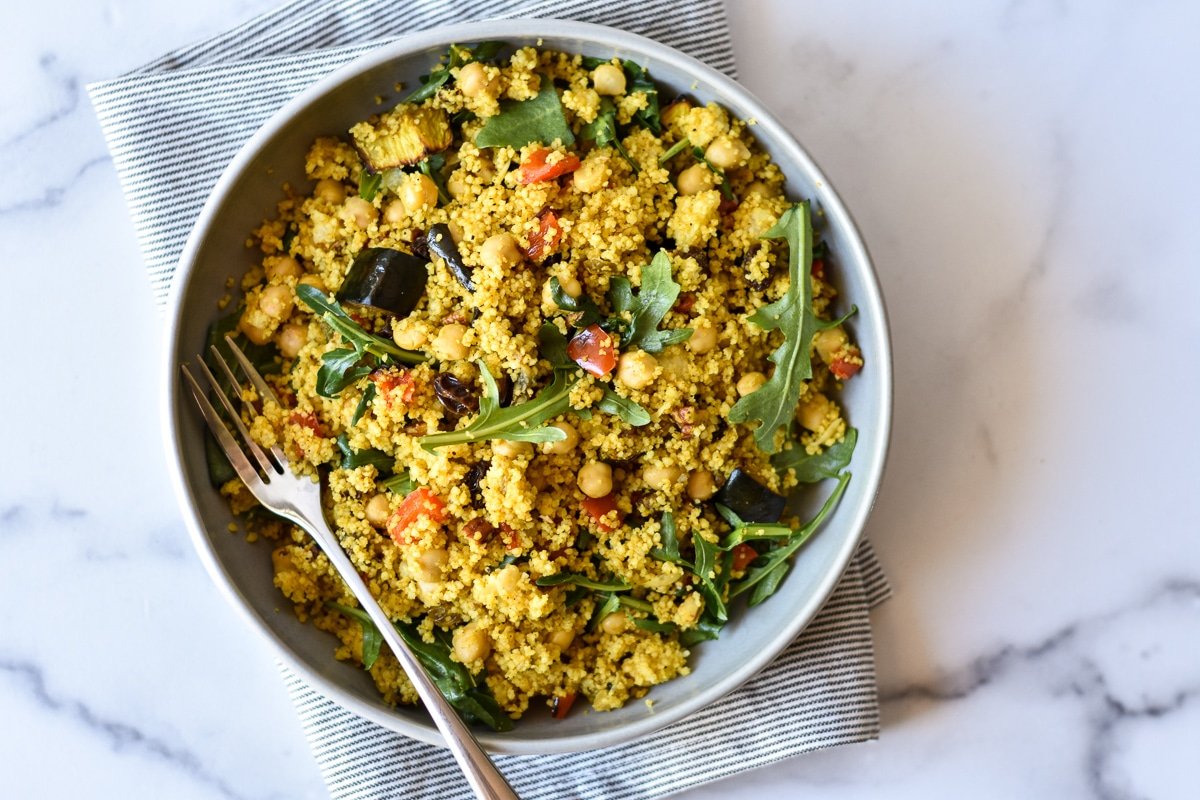
FIGHTING CLIMATE CHANGE WITH FOOD
This series is a collaboration between Goya & Greenpeace. Writers, researchers and activists explore what sustainability looks like out in the field, and as an extension, in your kitchen. From seed libraries and their importance in the face of climate change, to how the cultivation of ragi is woven into the needs of soil, livestock and nutrition; finding alternative uses for spent grain in the microbrewery capital of India, and offering insight into building your own toolkit for gauging sustainability, this series offers a slice of what sustainable, organic agriculture and consumption in India looks like today.
To learn more on sustainability, organic farming and the impact-driven work of Greenpeace in the field, click here.
The United Nations General Assembly has declared 2023 as the International Year of Millet. Sohel Sarkar looks at the Women’s Collective that promotes millet cultivation among female farmers in Tamil Nadu, and the rationale for reviving millets in a climate-insecure world.
For most of her life, Latha, a 43-year-old widow and mother of three, worked on a commercial sugarcane farm. But in 2016, after her husband passed away in an accident, she came into possession of one and a half acres of land, and began attending meetings of the Tamil Nadu Women’s Collective (TNWC) to learn farming techniques she could implement. It was through the collective’s seed exchange melas that she received some barnyard millet seeds which she started growing along with pulses and a few vegetables. Seven years later, her small plot of land yields more than enough to feed her kids, Latha says. Another TNWC member Malli did not own any land, but when she and a few other women from the drought-prone Dharmapuri district approached the collective, it helped them lease about two acres of land on which they now grow a mix of millets, oilseeds and pulses.
The TNWC was founded in 1994 with the aim of supporting women who faced gender-based violence. In that capacity, it worked with rural women, and in particular, poor and landless Dalit women. Since many of these women were farmers or farm labourers, the collective soon veered into advocacy on issues of health and nutrition, food security and climate-resilient farming. While discussing these issues with its members, the collective realised that cultivating millets was the answer to most of these problems, Sheelu Francis, the founder of TNWC tells me. The collective began encouraging and enabling women, especially those living in the dryland and drought-prone areas of the state, to grow millets on whatever little land they owned, and helping others lease land in order to cultivate. Much before India declared 2018 as the National Year of Millets, or the United Nations proclaimed 2023 as the International Year of Millets, or states like Tamil Nadu, Karnataka and Odisha launched their Millet Missions, women like Latha and Malli, with support from grassroots organisations like the TNWC, have been at the forefront of a quiet renaissance of this ancient grain.
Why Millets Fell Out of Favour
India’s association with millets is a long one, dating back to over 6,000 years. As late as the 1950s and 60s, it was one of the most widely grown staples in the country. Over centuries, farmers developed different varieties adapted to various soils, altitudes, and climatic and weather conditions. These are broadly classified as major millets, which include sorghum, pearl millet and finger millet; and minor millets, which include foxtail millet, kodo millet, barnyard millet, little millet and proso millet, among others. Especially for economically marginalised communities in drought-prone areas like the Deccan, central and western India, and the western ghats, and mountainous regions in the north and the northeast, millets served as a crucial source of sustenance and nutrition. According to a report by the Millet Network of India, millets are a rich source of fibre, protein, minerals and B-complex vitamins, and have much higher levels of both calcium and iron compared with rice. Certain millets, like sorghum, are gluten free and hence a useful dietary cereal. Other varieties are known to reduce risk of heart disease, cancer and diabetes; improve respiratory health; protect against several degenerative diseases and detoxify the body.
Above: Women farmers of Tamil Nadu Women's Collective.
For all their nutritional benefits, millets are remarkably easy to grow. They grow well as rain-fed crops in dry regions with fallow or infertile soil. Some varieties of millets can also grow in sandy, acidic and saline soils. According to the global research organisation Crops Research Institute for the Semi-Arid Tropics (ICRISAT), millets can survive less than 350 mm of rainfall, withstand high temperatures, do not require chemical fertilisers, and are by and large pest resistant.
Despite their varied advantages, both in terms of climate resilience and nutritional value, these hardy crops fell out of favour in the sixties with the arrival of the Green Revolution. Through these agrarian reforms, meant to make India more food secure, the government pushed farmers to switch to hybrid high yielding seeds which were dependent on irrigation and chemical fertilisers and pesticides. The focus was on two highly water-intensive crops, namely rice and wheat. Once farmers realised that the government was providing input subsidies to grow rice and wheat and buying back the crop at a guaranteed price, they increasingly began to shift away from more sustainable grains like millets, which did not need irrigation and lent themselves to mixed cropping and intercropping systems. In states like Tamil Nadu, where 64 percent of the area is drought-prone, government support for paddy incentivised farmers even in the dry areas to get loans for deep borewells and switch to paddy cultivation because there was an assured market for their crop, Francis of TNWC points out. Over time, the acreage under millets fell drastically.
As the government started distributing rice and wheat at subsidised rates under the public distribution system (PDS), food habits changed as well. The easy availability of cheap rice and wheat was compounded by the fact that millet preparation was laborious, and there were no large scale milling facilities available. “Women were going through a lot of hardship to process millets and prepare it. With free rice from the ration shops, most people switched away from millets, which affected the health of the community in the long run,” Francis explains. Needless to say, millets were excluded from the PDS.
As polished basmati rice and refined wheat flour first became aspirational, and later the norm, a cultural bias developed against the consumption of “coarse cereals” like millets which came to be considered “poor man’s food”. In states like Odisha and Meghalaya, where it was the staple food of many indigenous communities, younger generations in particular eschewed this nutrient-dense grain in favour of rice. The result was widespread malnutrition. A survey conducted by the non-profit Nirman in the early 2010s showed that though indigenous farmers occasionally benefitted from cultivating other crops, they also suffered from several health hazards due to the absence of millets from their daily diets, says founder Prasant Mohanty. Moreover, “once farmers stopped cultivating them, many indigenous varieties of millets became extinct or endangered”, he adds.
“A Woman’s Crop”?
However, even as millets receded from commercial fields, it survived because women still grew the grain in small quantities to supplement the rice and wheat they received from the ration shops, and feed their families. It was paradoxically the “lack of resources related to irrigation that kept millet cultivation alive on certain plots of land, for certain households”, says Kavitha Kuruganti, founder and convenor of the Alliance for Sustainable & Holistic Agriculture (ASHA), and a member of the Member Mahila Kisan Adhikar Manch (MAKAM). Women expressing a greater interest in millets in the regions it was a staple just one or two generations ago, could be due to “gendered roles related to food/nutritional security of the household thrust on women, or as some argue in the ecofeminism framework, that millets fit into a framework of nurturing and caring that women have, whether it is for the household or livestock or the ecology,” she adds.
Above: Many of TNWC members grow millets in small plots of land leased in groups; Millets are grown in intercropping or mixed cropping systems along with pulses, oilseeds and vegetables.
Shailaja Fennell, professor in the department of land economy at the University of Cambridge calls millets “a woman’s crop”. “In most communities, women are the primary producers of millets and spend long hours in processing them. The lack of focus on marginal communities had the added disadvantage of not recognising the arduous labour demands of millet production that women in marginalised communities had to endure and still go through,” Fennell explains in an interview. But with renewed interest in the grain in recent years, women’s traditional links with millet cultivation can also improve their lives in the future, Fennell argues.
When the TNWC first started encouraging farmers to grow millets, it began by identifying single women who were most likely to be able to make their own farming decisions, organised them into smaller groups, and helped them lease land, Francis says. Today, the collective works with 30,000 women farmers, spread over 20 districts across the dryland areas of Tamil Nadu, who either have some land or lease it individually or in groups. Their fields, while small – anything between 10 cents to 1.5 acres – are inherently biodiverse. Often four to five different types of millets are grown along with a variety of pulses, oilseeds, spices and vegetables. “It means that when one crop fails, we can depend on others. That’s helped us to survive the drought,” Francis says, referring to the 2016 drought in Dharmapuri, when the district received less than half its average rainfall, the worst in Tamil Nadu in 140 years.
Such unprecedented climate events will only increase as temperatures soar and rainfall becomes more erratic. Over the past few decades, India’s semi-arid regions have expanded by 10 percent. These areas are expected to also become warmer over the next fifty years, with more frequent and intense droughts and floods, which has grave consequences for food security. Little wonder that in the face of climate change-related uncertainties, governments have come to increasingly recognise and value millets for their ability to tolerate rising temperatures, erratic rainfall and drought-like conditions. Over the past decade, drought-prone states like Karnataka, Tamil Nadu, Andhra Pradesh, Rajasthan, Gujarat, Madhya Pradesh and Maharashtra, which have witnessed growing agrarian distress, have launched Millet Missions to bring these “climate-smart” crops back to farmers’ fields and on people’s plates.
However, long before such state-led initiatives, grassroots farmer producer organisations like TNWC and Nirman have been organising farmers, many of them women, to bring back these forgotten crops. In 2006, when the non-profit SABALA approached villagers in the semi-arid Vizianagaram district of Andhra Pradesh to take up millet farming, women took the first step. By 2020, about 2,000 female farmers were cultivating millets with SABALA’s support to feed their children who were suffering from malnutrition. In Meghalaya, the Shillong-based North East Slow Food and Agricultural Society (NESFAS) runs a campaign called ‘No Woman no Krai’ – krai is the term for millets in the local Khasi language – as a reminder of the deep historical connections between Khasi women and millets. A 2015 documentary Kings have Resorts/ People Have Songs recalls a harvest song called Long Hai which has only been performed only by women in the Jaintia Hills for the past sixty years. Linked to millets, the song receded from memory once the cultivation of the grain was abandoned. At the time the documentary was filmed, the local community was making efforts to revive Long Hai as well as the grain it is linked with. Now, as in the past, Khasi women are at the centre of both efforts. In Odisha, the revival of millet cultivation among the indigenous Kutia Kondh community is centred around the annual Burlang Yatra. Like Long Hai, this festival, in which women exchange traditional seeds not only among themselves but also pass them down to younger generations, is testament to how women and millets are inextricably connected.
A ‘Seed Secure’ Future?
With most states having no centralised millet seed banks, women from these communities also act as decentralised seed savers. More than 10,000 members of the TNWC have saved between five to thirty varieties of seeds, and shared them with other members as well as with farmers from other states, Francis says. In Telangana, the 5,000 members of the Deccan Development Society (DDS), which works with small and marginal women farmers, have built their own seed banks. The village-level women’s sanghams maintain the seed banks, and help women members plan their crops for the year.
Organisations like the Millet Network of India (MINI), of which the TNWC is a part, have been instrumental in this regard. Initiated by DDS, MINI facilitates women millet farmers to come together once every year, and share not just seeds but also ecological farming techniques, water conservation methods, ways of dealing with the climate change-related impacts, and even millet recipes.
What is common to the farmer members of the TNWC, SABALA, DDS as well as the women farmers supported by Nirman and NESFAS is that they grow millets on a subsistence basis. Rather than grow for the market, TNWC encourages its members to exchange their excess produce with others in the collective and the local community. The produce from their small plots of land is also used to pay rents on leased land. “The lease amount is always paid in kind, amounting to one third of the food grown on the land. If the crops fail due to floods or drought, then you don’t have to pay anything,” Francis explains.
The Key Challenges
It is not hard to see why women millet farmers, who are among the poorest and the most marginalised agricultural workers in the country, grow the grain on a subsistence basis. In a country where 80 percent of rural working women are engaged in agriculture, only 13 percent own land; most work as farm labour. Francis says that leasing even small plots for the collective’s members has been tough. Often landowners will take back their once fallow or infertile land after TNWC’s members have worked on it for a few years, restored soil fertility – the legume crops grown with millets release nitrogen into the soil and are also prolific leaf shedders which acts as natural manure – and seen good yields from the land. The collective tries to circumvent this problem by identifying absentee landowners who have left their villages to move to the city, and persuading them to lease their land. “We also identify women who own land but do not cultivate, and try to include them in our collective groups. That’s another way of ensuring that land is available to the collective for the long term,” Francis adds.
Above: A seed exchange mela organised by the TNWC.
The other challenge is that most state governments don’t buy millets from farmers directly at guaranteed prices. In 2013, the National Food Security Act proposed the inclusion of millets in the PDS, to fulfil the promise of nutritional security for women and children in particular. But a decade later, only a few states like Karnataka, Tamil Nadu, Telangana, Odisha, Rajasthan and more recently, Andhra Pradesh and Chhattisgarh have promised to buy and distribute millets via the PDS. In some states, like Tamil Nadu, implementation is a long way off. In others, either the government procures only a fraction of the millets grown in the state, or buys only on a few varieties, which risks a further loss of millet biodiversity. The Odisha Millets Mission, for instance, promotes seven types of millets on paper, but the focus is mainly on finger millets which accounts for 86 percent of the total millet acreage in the state. Moreover, only a third of the finger millets produced in the state is procured by the government, the rest being left to farmers to consume or sell at distress prices. Odisha plans to set minimum support prices on foxtail and little millets, but such minor millets continue to be neglected in most state procurement policies. A 2014 report by the Dhan Foundation found that the cultivation and consumption of minor millets has been declining at twice the pace of finger millets.
Turning Challenges into Opportunities
In the absence of an assured market for all varieties of millets, some women farmers have taken matters into their own hands. In Tamil Nadu, the Amudha Millets Collective buys millets grown by its members at market price. With the help of a millet processing unit and an oven purchased with the support of the Krishi Kendra Vigyan, members are able to produce millet cookies, savouries and health mixes, which the collective sells in nearby towns. It’s a self sustaining system as profits from the sale are circulated back to members.
In 2017, farmers affiliated with SABALA started a similar cooperative called Arogya which buys surplus millets from local women farmers, processes the grains using its own equipment, and sells the processed grains in the cooperative’s store. The profits from the store are used to train members to make ready-to-eat millet-based snacks, baked goods and meals. The cooperative also has long-term supply contracts with schools to ensure steady sales.
TNWC’s members have been running millet catering units as well as millet canteens in schools. Many women’s self help groups in Odisha run millet tiffin centres that, apart from ensuring access to a diverse diet, also provides the local farming community a primary processing unit for millets. In certain districts of the state, millet-based foods are provided in anganwadis for children. These initiatives not only expand the gamut of livelihood opportunities available to women farmers, but also go a long way in popularising millet consumption and improving food security at the household level, Francis says. But for farmers to produce at more than subsistence levels, it is critical that governments implement the inclusion of all varieties of millets in the PDS, as promised by the National Food Security Act. An assured market for crops is the only way to encourage sustainable farming, support women farmers and ensure nutrition to those who depend on ration shops for their food, she adds.
The recognition of women as “farmers” and not just “farm labourers” is critical, Kuruganthi says. Despite a national policy that delinks the definition of a “farmer” from land ownership, the term remains closely tied to it. And with a staggering gender gap in land ownership, women remain invisible despite their greater labour contribution in agriculture. Some of this invisibility is being undone through the grassroots initiatives to revive millet cultivation. As the experiences of women’s collectives and organisations like the TNWC, SABALA and the DDC show, women farmers have not only helped sustain this miracle grain in India, but have also shown that sustainable cropping methods in a rain-fed system is precisely what is needed in a climate-insecure world grappling with rampant food and water crises. For initiatives like the International Year of Millets to be meaningful and productive, they must centre the ingenuity and labour of poor and landless women farmers in keeping this “orphaned crop” alive.
Sohel Sarkar is a freelance journalist, editor, and feminist researcher-writer. Her cultural critiques, reviews, and personal essays have appeared in Bitch Media, Himal Southasian, Whetstone Magazine, and Color Bloq, among others. Find her on Twitter here.
Banner image credit KathEats.
ALSO ON THE GOYA JOURNAL
